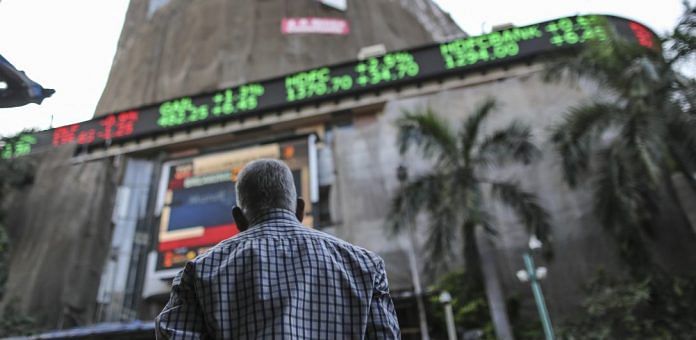The textbook recipe for an emerging-market crisis requires large debt, and an associated domestic credit bubble.
Emerging-market stresses have been building since at least 2013. Investors may have forgotten the effect of the “taper tantrum” on the so-called Fragile Five – Brazil, India, Indonesia, Turkey and South Africa – a term coined by Morgan Stanley to describe their vulnerability to capital outflows. Monetary accommodation, lower current-account deficits and growth disguised the underlying challenges, attracting more capital to those markets.
The textbook recipe for an emerging-market crisis requires a large dose of debt and an associated domestic credit bubble, including misallocation of capital into uneconomic trophy projects or financial speculation. Then add: a weak banking sector, budget deficits, current-account gaps, substantial short-term foreign-currency debt and inadequate forex reserves. Season with narrowly based industrial structures, reliance on commodity exports, institutional weaknesses, corruption and poor political and economic leadership.
Based on these criteria, the number of emerging markets at risk extends well beyond Turkey and Argentina. Like Chekhov’s families, each nation has different sources of unhappiness.
Total emerging-market borrowing increased from $21 trillion (or 145 per cent of GDP) in 2007 to $63 trillion (210 per cent of GDP) in 2017. Borrowings by non-financial corporations and households have jumped. Since 2007, the foreign-currency debt – in dollars, euros and yen – of these countries doubled to around $9 trillion. China, India, Indonesia, Malaysia, South Africa, Mexico, Chile, Brazil and some Eastern European countries have foreign-currency debt between 20 per cent and 50 per cent of GDP.
In all, EM borrowers need to repay or refinance around $1.5 trillion in debt in 2019 and again in 2020. Many are not earning enough to meet these commitments.
Turkey and Argentina have twin deficits (combined budget and current-account gaps as a percentage of GDP) of 8.7 per cent and 10.4 per cent, respectively, that require financing. Pakistan has a twin deficit well above 10 per cent. Brazil, India, Indonesia, South Africa and Ukraine are at or above 5 per cent on that basis. In India, if state governments are included the number approaches double figures. Those gauges are rising in China, Malaysia, Mexico, Colombia, Chile and Poland.
Then look at reserve coverage – foreign-exchange holdings divided by 12-month funding needs for the current account, short-term debt maturities and amortization of long-term debt – which measures the capacity to meet immediate foreign-currency obligations. Turkey and Argentina score 0.4 and 0.6 respectively, meaning they can’t cover their needs without new borrowings. Pakistan, Ecuador, Poland, Indonesia, Malaysia and South Africa have reserve coverage of less than 1. Chile, Hungary, Colombia, Mexico and India have coverage of less than 2. Brazil and China come in at 2.5 and 3.1 times, respectively.
Even where reserve coverage appears adequate, caution is warranted. Long-term debt becomes short term with the passage of time or an acceleration event. Forex holdings may not be readily accessible. Much of China’s $3 trillion of reserves is committed to the Belt and Road infrastructure initiative. The ability to turn U.S. Treasury bonds and other foreign assets into cash is limited by liquidity, price and currency effects. Reserve positions are notoriously opaque: In 1997, the Bank of Thailand was found to have grossly overstated available currency holdings.
China and India face well-documented difficulties in their financial systems. The true level of Chinese non-performing loans may be several times the official 1.75 per cent. India’s NPL ratio is around 10 per cent of all loans.
Events in Turkey and Argentina show how these weaknesses become exposed. Global liquidity tightening, led by the U.S. Federal Reserve increasing rates and unwinding its bond purchases, reduces capital inflows and increases the cost of borrowing. Trade tensions, sanctions, the breakdown of the global institutional structure and rising geopolitical risks exacerbate those stresses.
Weaknesses in the real economy and the financial system feed each other in a vicious cycle. Capital withdrawals undermine currencies, driving down prices of assets such as bonds, stocks and property. The reduced availability of finance and higher funding costs add to pressure on over-extended borrowers, triggering banking problems that feed back into the economy. Credit rating and investment downgrades extend the cycle.
Policy responses can make things worse. Higher interest rates to prop up currencies (60 per cent in Argentina) may be ineffective. They reduce growth and aggravate the debt burden. Weaker currencies import inflation. Supporting the financial system and the economy pressures government finances. International Monetary Fund (IMF) remedies, which aren’t always effective, impose financial and human costs that many nations find unacceptable, prompting political and social breakdown. And the IMF’s capacity to assist may be constrained by concurrent crises.
Investors are assuming that critical vulnerabilities have been addressed.
Important changes made after the 1997 Asian crisis created different risks, however. Floating exchange rates and unrestricted foreign-exchange movement increase currency volatility and allow capital flight. While local-currency debt has increased, unhedged foreign-currency debt remains significant.
Higher returns on local-currency debt attracted foreign investors to India, China, Malaysia, Indonesia, Mexico, Brazil, South Africa and Eastern Europe. But weakening currencies may drive them to exit, hurting all assets.
Turkey and Argentina may be special cases. But given the fundamental problems, other emerging markets are likely to come under pressure. As Herbert Stein’s 1976 law states: “If something cannot go on forever, it will stop.”- Bloomberg




Today, more than ever before, we need world class economists. For someone to blame Dr Rajan for the slowdown illumines how far we are from that happy situation.